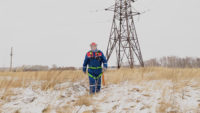How to protect lone workers

Lone workers may be found in a fixed facility, or at a remote site, away from a typical base. Many different industries employ lone workers -- construction, utilities, maintenance, agriculture, real estate, delivery, security, and numerous other sectors.
Who is looking out for workers who are alone off-site? The law requires employers to protect their workers wherever they may be. Protecting lone workers comes with some challenges, but it can be done efficiently and successfully to keep every employee safe on the job.
Many lone workers worry about their own safety, leading to low job satisfaction and high turnover in many industries that employ lone workers.
OSHA offers few regulations regarding lone workers, and the few they do have are somewhat vague and unclear. OSHA does require employers to check on lone workers “at regular intervals” and at the end of their assignment or shift.
Yet they do not specify what those regular intervals should be. If a lone worker is injured on the job within ten minutes of starting their shift, how long can they expect to wait for help?
Some industries that commonly employ lone workers have taken the initiative to protect their employees, developing tools and strategies to empower lone workers to reach out when they need help.
Some of the safety solutions currently used by lone workers include:
An emergency signal for help. This involves smartphone applications that give users the ability to alert emergency personnel that help is needed. To make it simple to use should the worker become disabled, all they need to do is pull a wrist tether from an unlocked smartphone. Emergency responders can locate the employee with a GPS tracking system and access their preprogrammed personal health information before they get to the site.
A visual deterrent. Personal safety involving unknown and possibly dangerous or aggressive people is always a concern. Workers can display visual signals to a would-be aggressor, letting them know the employee has immediate access to authorities. This may be as simple as a conspicuously bright flag tethered to a mobile phone. When workers threaten to contact the police, an attacker may reconsider approaching the lone worker.
An audible alarm. An audible alarm may be the simplest and most effective deterrent against someone considering harming a lone worker. Many smartphone apps are available to sound an alarm or alert easily and quickly. Some allow users to launch the alarm without unlocking the phone or pressing any buttons.
Source: https://blogs.lawyers.com
Looking for a reprint of this article?
From high-res PDFs to custom plaques, order your copy today!




